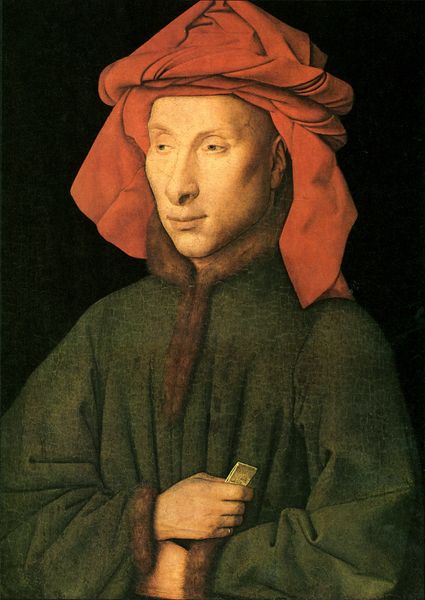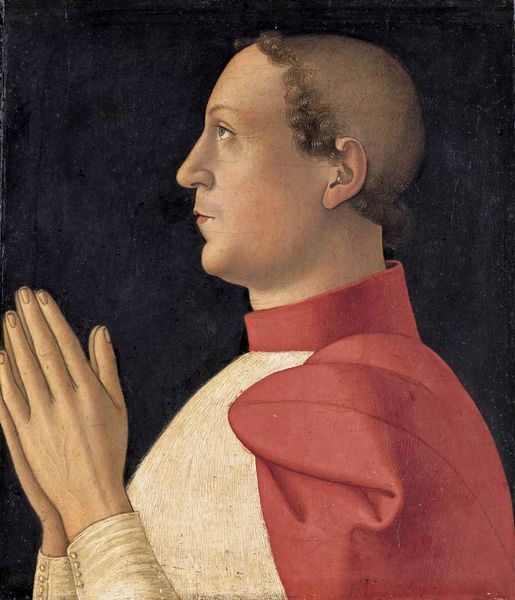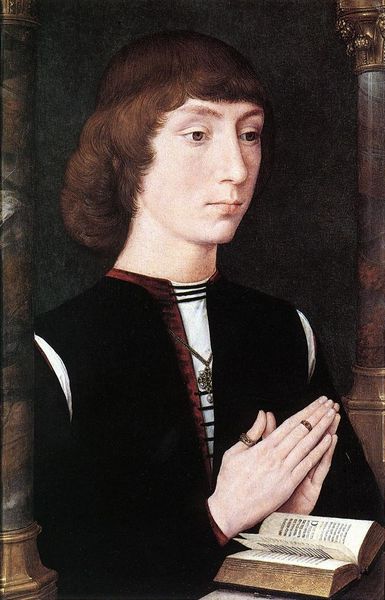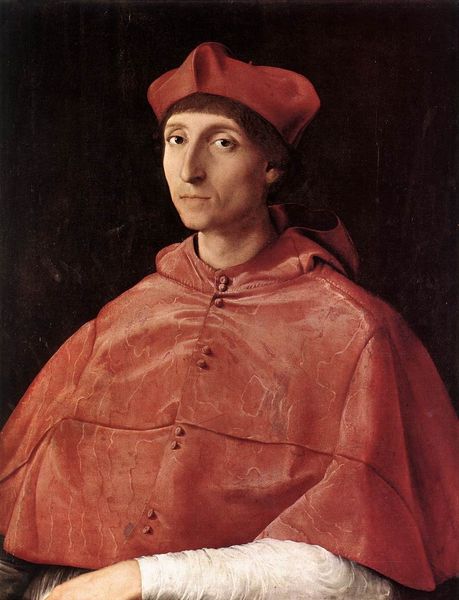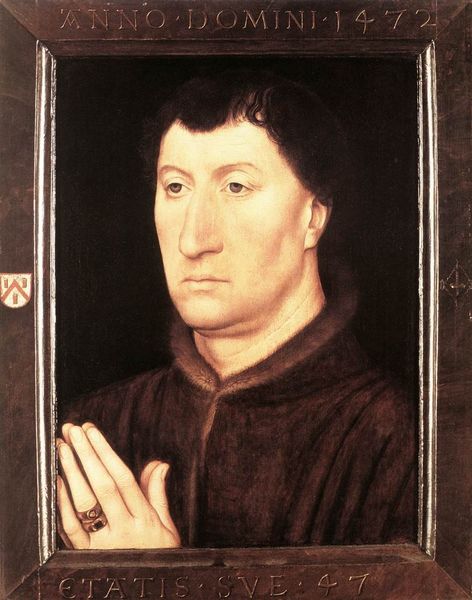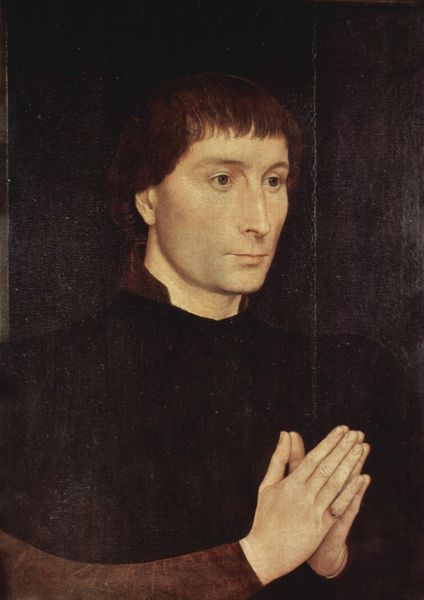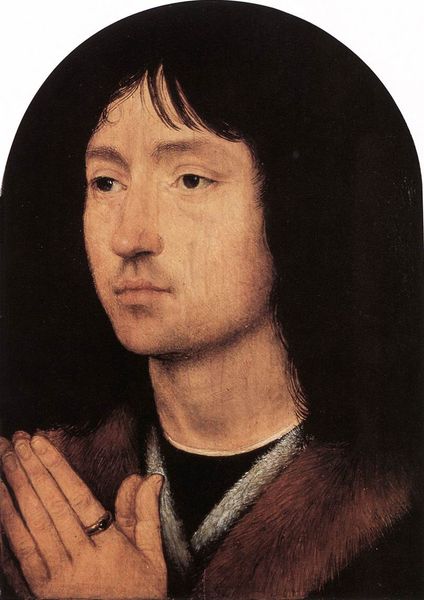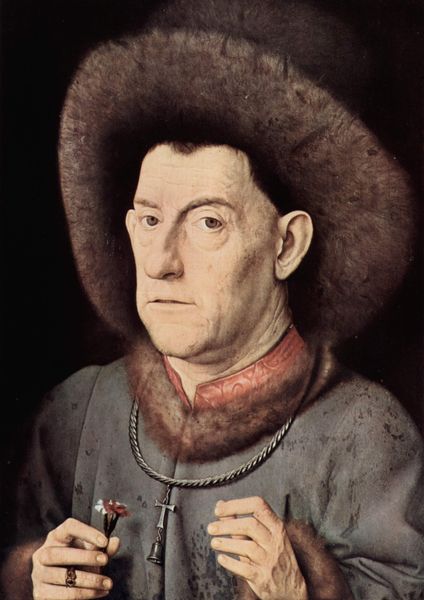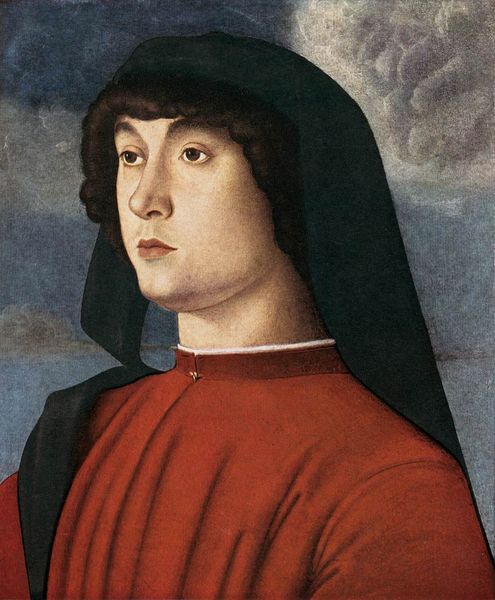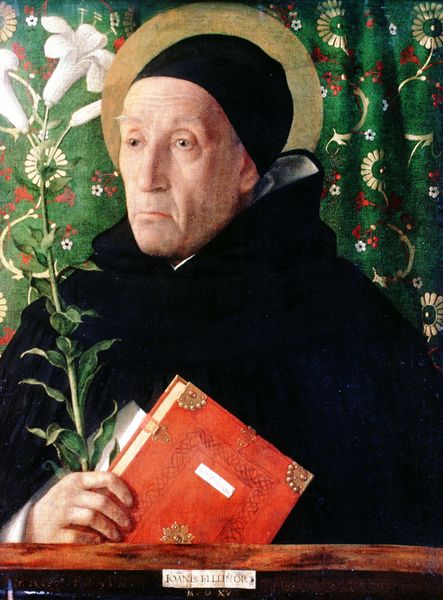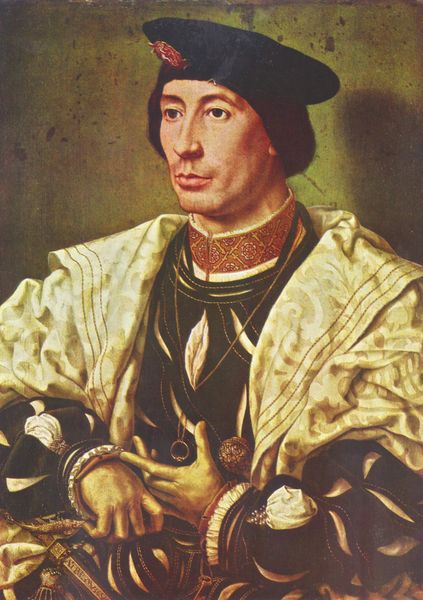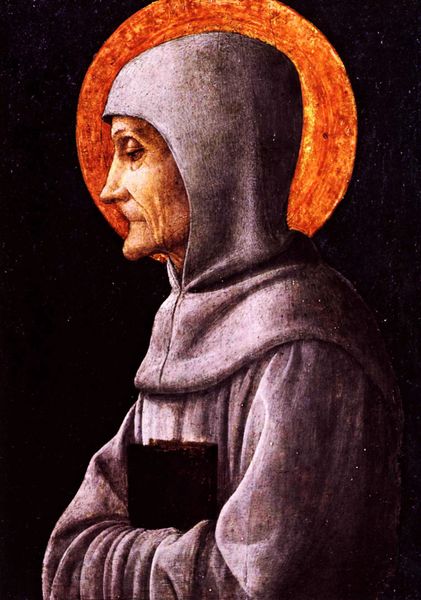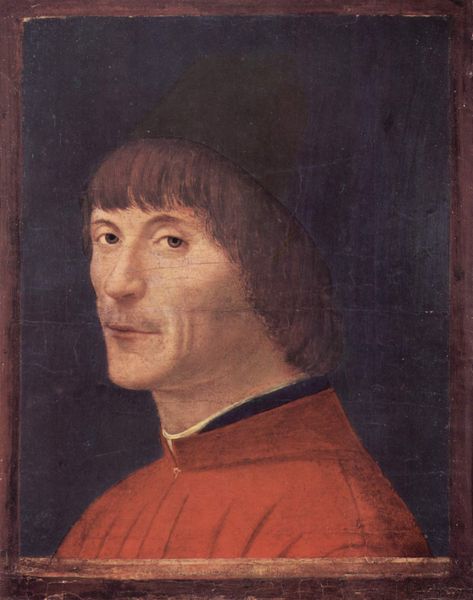
painting, oil-paint
#
portrait
#
painting
#
oil-paint
#
figuration
#
11_renaissance
#
history-painting
#
northern-renaissance
Dimensions: 35 x 27 cm
Copyright: Public domain
Curator: Painted circa 1485, this is Jean Hey’s “Portrait of Charles II of Bourbon,” an oil painting currently housed in the Alte Pinakothek in Munich. My immediate impression is the artist’s mastery of light, especially on the subject's face, which gives the portrait an almost ethereal quality. What are your initial thoughts? Editor: Immediately, the contrast between the richness of Charles’ attire, those dark accents on the white cloth for example, and what looks like a deliberate awkwardness in his pose speaks volumes. There’s such detail and care given to representing status, but it seems that the materials speak just as much as Charles himself. Curator: I concur that the artist directs the viewers to the subject's status through careful details. The way the light plays across his delicate hands draws attention to the rings. In Northern Renaissance portraiture, such minute detail signifies affluence and power. Editor: Absolutely. The craft here becomes a vehicle for communicating class. Hey meticulously depicts the surface texture of each fabric. This invites questions about access to those materials, where they originated, who produced them, and how those processes might have related to Charles’ own authority. Curator: Indeed. But also, notice the architectural elements in the background, their forms creating a sense of depth. It's the relationship between figure and architectural space that creates symbolic meaning here. The overall composition seems consciously arranged to convey dignity, and the architectural setting certainly plays a significant role in reinforcing the subject's standing. Editor: And think of the labor involved. Jean Hey using precious pigments, hand-grinding them. The sheer number of work hours in rendering these materials with such accuracy would cost a small fortune. Considering the broader social structure and access to these artistic production processes certainly reframes how we think about status displayed. Curator: Ultimately, the artwork transcends mere representation and speaks of a carefully constructed visual language. Every color, every angle seems meticulously chosen, composing a grand aesthetic. Editor: Yes, beyond a single depiction of status or figure, it reminds me of a convergence of global resource streams. This provides great perspective, and really grounds the historical in complex human networks.
Comments
No comments
Be the first to comment and join the conversation on the ultimate creative platform.
